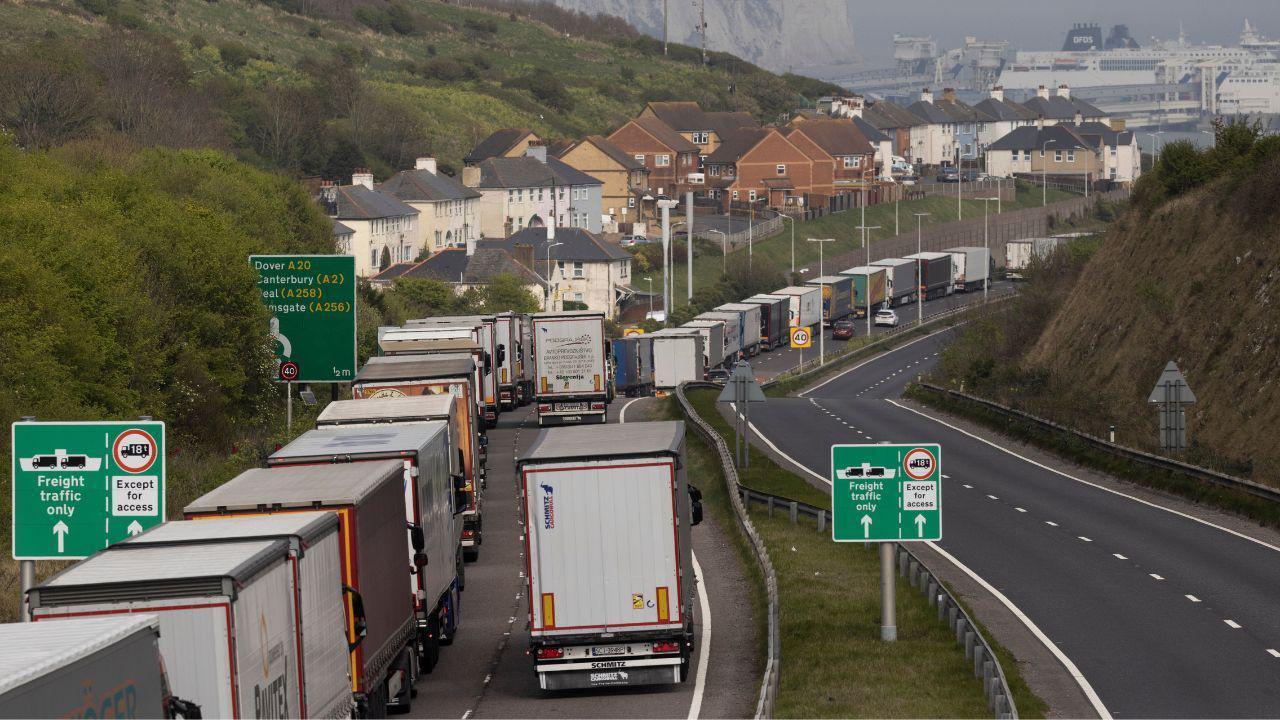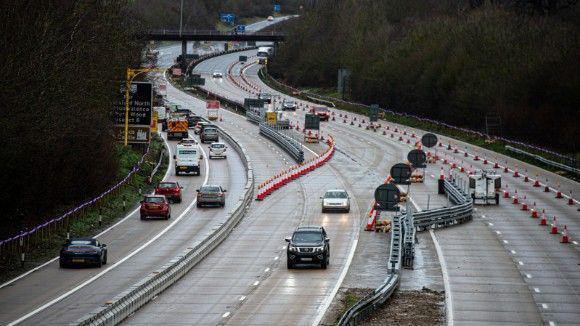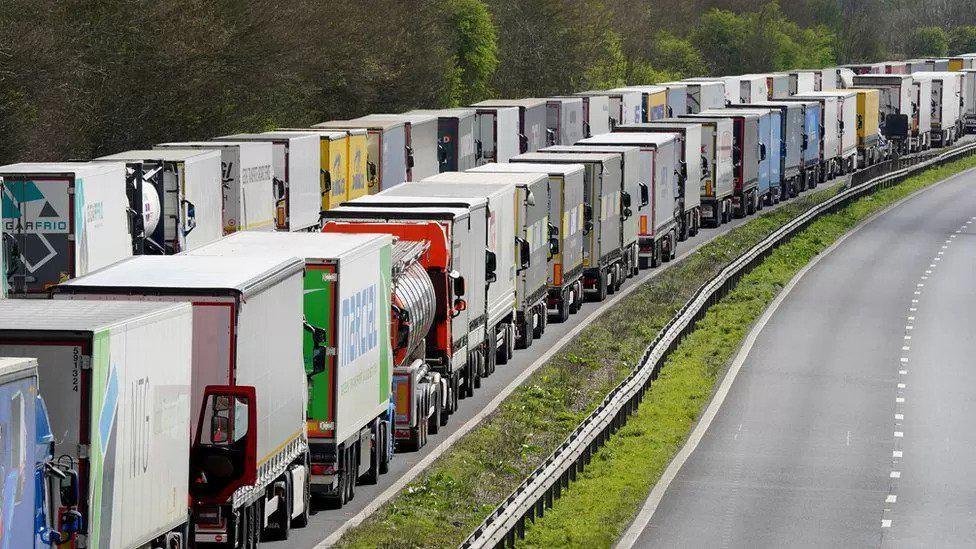New system in place for lorries crossing Channel

The new permit system hopes to stop freight drivers avoiding the queues
- Published
A traffic management system for lorries queueing to cross the English Channel is returning to the M20 in Kent later with a new permit process.
The new method is being put in place overnight on Wednesday as part of Operation Brock.
Operation Brock sees lorries travelling to Dover queue on one side of the M20 between junctions eight, near Maidstone, and nine, near Ashford, with the other carriageway used as a contraflow.
It is being rolled out as an increase in traffic is expected to head towards the Channel for the holiday season and the Olympic Games in Paris.
The new permit system plans to stop freight drivers from avoiding the queues.
It is hoped the new system will reduce congestion in and around Dover and limit the need for sudden closures of the A20 Roundhill Tunnels at Folkestone.
The Kent and Medway Resilience Forum's (KMRF) strategic lead Simon Jones said: "These freight permits are not a ‘fix all' solution. There is no doubt that, in busy periods, the situation on the roads heading through Dover remains extremely fragile."
As part of the new measures, permits will be issued to Port of Dover-bound freight drivers at the front of the Operation Brock queue.
To ensure drivers have followed the right route, all freight heading to the port have to leave the A20 at the Courtwood Interchange, where their permits will be checked at the end of the slip road.
If they have complied, they will be allowed to re-enter the queue on the A20 and continue their onward journey to the port.
Follow BBC Kent on Facebook, external, on X, external, and on Instagram, external. Send your story ideas to southeasttoday@bbc.co.uk, external or WhatsApp us on 08081 002250.
Related topics
- Published3 July 2024

- Published22 May 2024

- Published17 May 2023
